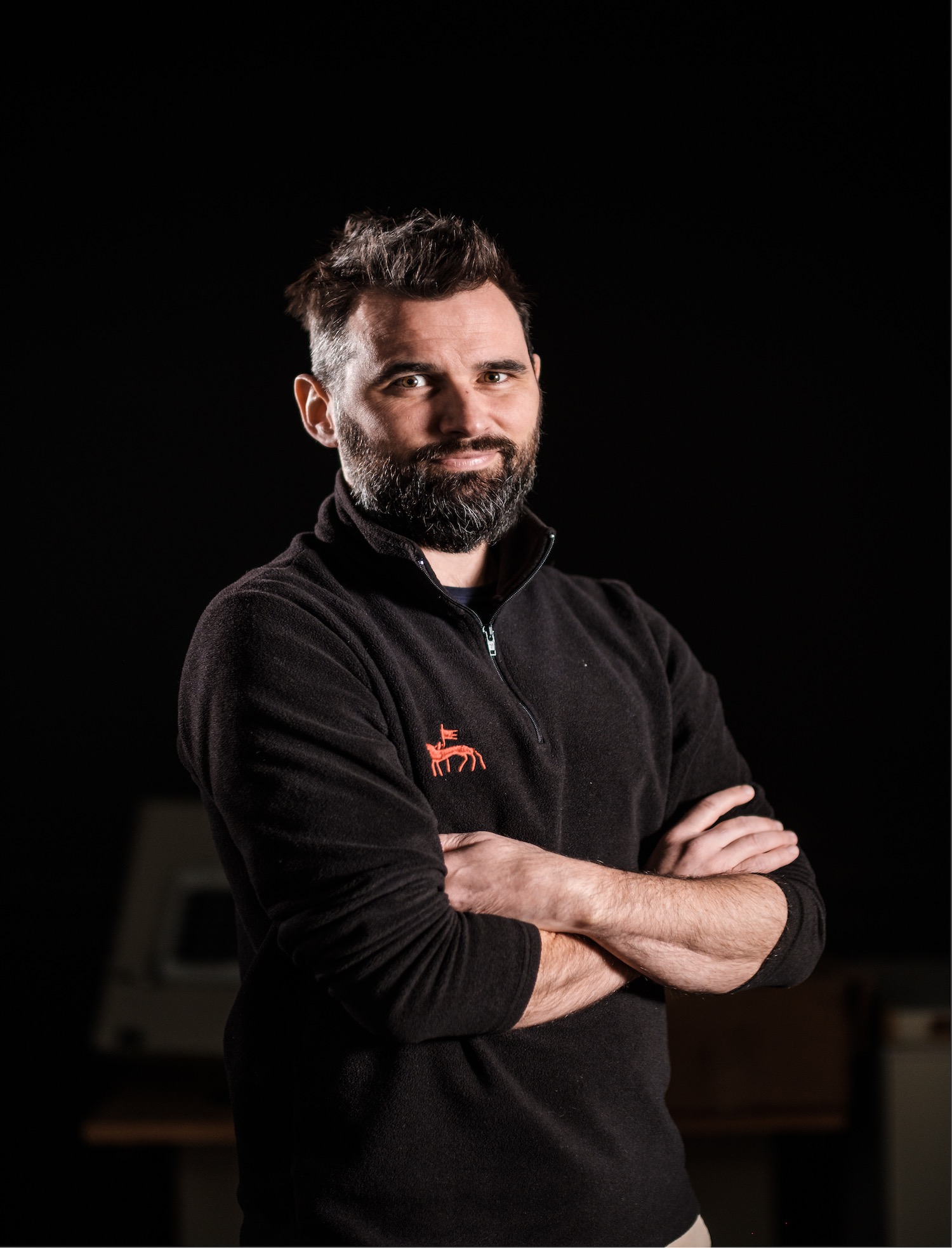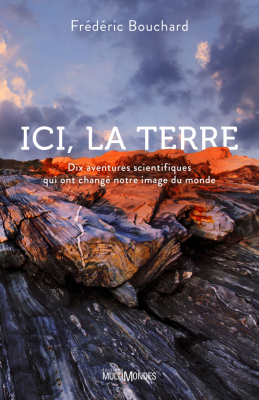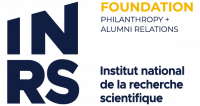Frédéric Bouchard
Frédéric Bouchard
Doctorate in Earth sciences, 2013
Assistant Professor, Department of Applied Geomatics, Université de Sherbrooke

“The INRS offers numerous advantages: a great scientific and human experience and access at all times to ultra-modern laboratories equipped with all the equipment needed to perform analyses in an efficient and automated manner.”
Passionate about science as a whole and the Earth sciences in particular, our graduate Frédéric Bouchard is driven by the desire to make knowledge accessible to as many people as possible. He is also an advocate of atypical career paths, bridging the gap between the academic world and other sectors, and is interested in research in northern terrains.
It was his bachelor’s degree in geology that brought Bouchard to James Bay and inspired him to explore northern soils further and to undertake a master’s degree during which he became interested in the links between permafrost, climate and landscape in Nunavik. He then worked as a geologist in a salt mine in the Magdalen Islands and as a tour guide in a tourist resort, where he combined his interests in geology and landscapes. He then taught Earth sciences at the college level. While wondering whether to pursue a career in teaching or research, he learned that Professor Pierre Francus—an expert in environmental sedimentology whom he had met at a conference while studying for his Master’s—was looking for a PhD student for a thesis project on Nunavik lakes, in line with his previous experience.
This led him to undertake doctoral studies at INRS Centre Eau Terre Environnement research centre, from 2007 to 2012. He takes away “a great scientific and human experience,” where he was given considerable autonomy and latitude, with a good dose of humor. According to him, “INRS offers great advantages: access at all times to ultra-modern laboratories equipped with all the equipment needed to perform analyses in an efficient and automated manner,” he says. “In addition, INRS and the Geological Survey of Canada are located in the same building, which makes for exceptional corridor discussions,” he adds. As part of his research that combines water and Earth sciences, he has enjoyed rich interactions with professors Isabelle Laurion, an expert in aquatic ecology, and Charles Gobeil, an expert in sediment dating.
Thanks to the warm welcome from all the staff, including Jean-Daniel Bourgault in the library, as well as Stéphane Prémont and Lise Rancourt in the laboratories, he felt at home at INRS. He also acquired essential skills for a researcher, including a scientific work method and writing skills. His experience at INRS also fueled his dream of becoming a university professor, which proved to be a “furiously competitive” pursuit.
After what he describes as a winding path, and following a four-year post-doctoral fellowship in France as part of the “Make Our Planet Great Again” international collaborative project call that led him to manage a team on the ground in Siberia, and then to various course loads, in 2021 he obtained a position as an assistant professor in the department of applied geomatics at the Université de Sherbrooke, where he continues to pursue his passion for research and teaching. He feels that his diverse work experiences have helped him achieve his goal.
He encourages students to “be creative and never stop coming up with new ideas and projects.” He adds, “Positions in companies, government, everywhere in the non-academic professions all require skills acquired at INRS, such as knowing how to manage a project, write a report, work in a team, be present in the field. These are transferable and essential skills, whether or not you land a career in research,” he adds. “I never really had a career plan. There is no one particular path, you can take breaks between degrees, you can work in different sectors, follow your interests... The important thing is to use your knowledge and your know-how, your knowledge and your experience,” he concludes.
It is this principle that makes science popularising a common thread in his career to date. The publication in November 2022 of his mainstream essay, Ici, la Terre. Dix aventures scientifiques qui ont changé notre image du monde [Here on Earth. Ten scientific adventures that have changed our image of the world] is another demonstration of his quest.
[As interviewed in September 2022.]
Tell us more about your essay, Ici, la Terre. Where did you get the idea? Why should we read it?
Even though knowledge transfer to the general public is not generally valued in the research world, I have always been determined to do it and to include these activities and publications in my CV. Since it is the Quebec and Canadian taxpayers who fund my work, I feel that I must explain to people what I do and why it is important.
I have always been concerned with making knowledge accessible. When I was a student, I had a radio show where I highlighted little-known scientists and earth science topics. A few years ago, I also worked with some colleagues on a comic book about permafrost that was translated into several languages. This interest had several unexpected ramifications.
When I was in France, I had a research position with no teaching duties. The time was right to develop a new popularization project. I was told: why don't you write a book? In the natural sciences, it is not too common to publish books for the general public. Thinking back to my columns on CKRL radio in Quebec City, I thought that I had discovered and broadcast many interesting stories, but radio is an ephemeral medium. I thought it would be interesting to leave a trace of these stories that deserve to be told.
So I pulled out my columns and continued my research on them. It was a top secret project for four years. I wrote a few lines from time to time. Then, a few years ago, I contacted a publishing house in Montreal to whom I sent a chapter as a sample, and they liked the style. For two years, we exchanged different chapters and comments, until two years ago, they confirmed that there was enough material to make a book. I've been working hard to finish it. The launch is scheduled for November 2 and I still can't believe it.
It starts with a desire to popularize science in general and Earth sciences in particular. There are ten chapters, ten stories inspired by my first love of geology, my field experience in Siberia, on plate tectonics, seabed exploration, glaciation... It takes place from the 17th century to the 1960s. These ten adventures aim to introduce scientists and the social and political context of their time. The researchers are human, therefore imperfect. Each one has his own colors in relationships of competition and collaboration. The human aspect is rarely evoked in the discoveries, so I wanted to make discover it. The book is aimed at the general public and it is written in a style acccessible to everyone, from our teenagers to our grandmothers. It is for everyone who has some interest in science in general and the Earth in particular.

Ici, la Terre
Dix aventures scientifiques qui ont changé notre image du monde
By Frédéric Bouchard
Éditions MultiMondes
